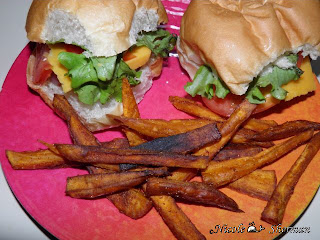By Sarah Stebbins
Clothing and Outerwear
Button-Down Shirts.
Unbutton the shirt. Unfasten all buttons, including the tiny ones at the collar, before laundering. Otherwise, the agitation in the machine and the weight of other garments may cause buttonholes to tear.
See More: Surprising Cleaning New Uses
Apply a stain remover. It's a good idea to pretreat collars every time you wash them. "Once stains from body oils build up, they are very difficult to remove," says Chris Allsbrooks, a textile analyst at the Drycleaning & Laundry Institute, in Laurel, Maryland. Use a stain remover or spot-clean with a mixture of water and liquid detergent. Pour it over the area, then rub with a soft toothbrush. It's especially important to spot-clean permanent-press shirts and other items that have been treated with resins so they retain their shape, because these fabrics tend to hold soiling.
See More: Laundry New Uses for Old Things
Use the permanent-press setting. Wash permanent-press shirts with all-purpose detergent on the permanent-press setting, which is gentler than the regular one, uses warm or hot water, and has a long cool-down rinse to further minimize wrinkling. Opt for the dryer's permanent-press feature, which has a cool-down period at the end. Wash non-permanent-press shirts on the regular cycle in cold or warm water.
See More: Organizing New Uses for Old Things
Sweaters
Wash cotton blends on gentle. Many knits made of cotton, synthetics, or blends can be machine-washed in cold or warm water on the gentle cycle with all-purpose or mild detergent. To combat wrinkles and stiffness, dry items on low for 5 to 10 minutes before laying them flat on a mesh sweater rack or a towel.
Use a zippered pillowcase for delicates. Place a wool, cashmere, or fine cotton sweater in a zippered pillowcase; wash on the delicate cycle with cold water and lay flat to dry.
Test silk sweaters for colorfastness. Delicate knits, like crochet and silk, are a different story: Dry-clean these, or test for colorfastness (to see if the color will bleed, place a dab of detergent on a dip a cotton swab in detergent and hold it on the fabric for two minutes) and hand-wash in cold water with mild detergent. Some knits may stretch out; reshape after washing and lay flat to dry.
See More: How to Speed Clean Your Kitchen
Socks
Never lose a sock again. One of the most frustrating aspects of doing laundry is the number of socks that suspiciously go missing. Forget putting out an APB: Simply pin each pair together before throwing it in the machine. No sorting, no matching necessary afterward.
See More: Quick Cleaning Solutions for Every Room
Jeans
Wash jeans in cold water. Most denim is top-dyed, meaning only the surface of the fibers is colored. To keep jeans from fading or acquiring white streaks, wash in small loads in cold water (with more water than clothes) with all-purpose detergent. This cuts down on abrasion, says Allsbrooks.
Stretch the legs to prevent shrinkage. "It's common for jeans to shrink in length" when washed, says Steve Boorstein, author of The Clothing Doctor's 99 Secrets to Clothing Care (Fashion Media Group, $5, amazon.com). Hold them by the waistband and legs and gently stretch them vertically before drying. Dry on low or medium heat; overdrying causes unnecessary wear and tear, so take jeans out when the legs are done but the seams and the waistband are slightly damp.
See More: The Worst Cleaning Jobs Made Easy
Hats and Gloves
Wash knit hats and gloves like sweaters. Follow the same instructions based on different fabric types. Cotton blends can be machine-washed cold on delicates, wool and cashmere on the delicate cycle with cold water, and so on.
Spot-clean structured hats. Newsboy and baseball caps could become misshapen so its best to keep them out of the washing machine.
Hand-wash leather-trimmed gloves. You can hand-wash gloves with small sections of leather if the leather is the same color as the knit; otherwise bleeding may be a problem. To dry, insert the handle of a wooden spoon in one finger and set the spoon end in a vase. This will help the glove retain its shape.
See More: How to Solve 19 Kitchen Cleanup Conundrums
Down and Polyester Coats
Wash adult coats in warm water. You can wash down coats in front-loading machines with a mild powder detergent and warm water on the gentle cycle. (If you have a top-loader, take these coats to a dry cleaner; most top-loaders have agitators that can compress and displace down filling and prevent pieces from tumbling freely.)
Use towels for speed drying. Smaller items, like children's jackets, whether filled with down or polyester, can go in a front- or top-loader on the gentle cycle; tumble dry on low. Put a few clean, dry towels in the dryer to help soak excess moisture and speed drying.
Read the Rest: How to Do Laundry

































